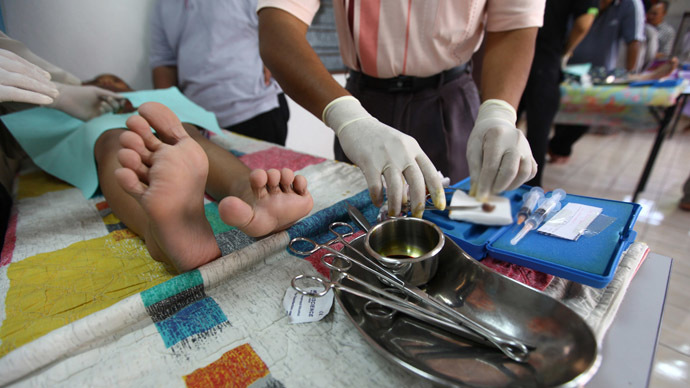Benefits of male circumcision outweigh risks, CDC says

The Centers for Disease Control and Prevention said Tuesday that years’ of research and mounds of medical evidence suggests the benefits of male circumcision outweigh the risks.
The CDC stopped short of fully advocating for circumcision in all
circumstances this week, but rather released a draft containing
federal recommendations for health care providers concerning the
procedure that will now be open for comment during the next month
and a half.
Clinical trials conducted over the course of five years in
sub-Saharan Africa has led officials with the CDC in the United
States to conclude this week that circumcision can prove to be a
powerful factor in diminishing a male’s risk of contracting the
human immunodeficiency virus (HIV) and sexually transmitted
infections, including types of the human papilloma virus (HPV)
and herpes, as well potential urinary tract infections during
infancy.
“Until recently, prevention of human immunodeficiency virus
(HIV) infection was unlikely to factor in the decision to
circumcise a male newborn or boy, although other preventive
health benefits of male circumcision may have been considered.
However, data now indicate that male circumcision reduces the
risk of male HIV acquisition through penile-vaginal sex,”
reads an accompanying document filed by the CDC this week on
Regulations.gov.
"The benefits of male circumcision have become more and more
clear over the last 10 years," Dr. Aaron Tobian, a Johns
Hopkins University researcher involved in one of the African
studies, told the Associated Press.
Although the draft paper notes that social, cultural, ethical and
religious factors play a part in deciding whether or not an
infant male should have their foreskin removed, CDC officials now
believe that doing such can decrease the risk of contracting HIV
by 60 percent over time, and reduces the odds of testing positive
for certain cancers by a third.
Among the recommendations listed by the CDC are Consideration of
factors associated with decision making; Counseling sexually
active adolescent and adult males regardless of circumcision
status; Counseling uncircumcised sexually active adolescent and
adult males; and Counseling parents of male newborns, children,
or adolescents.
“These recommendations are based on an evaluation of
available information on the health risks and benefits associated
with high-quality, medically performed male circumcision and were
developed to pertain to men and male newborns in the United
States,” the CDC report reads in part. “In these
recommendations, the preventive benefits of male circumcision are
generally expressed as relative-risk reductions (e.g., a 50%
reduction from a 2% risk of an STI to a 1% risk), whereas any
associated harm is expressed as an absolute risk (e.g., a 2-4%
risk of adverse events).”
The CDC plans to finalize their formal guidelines next year after
the 45-day commenting process ends in January.














